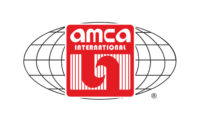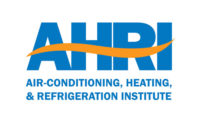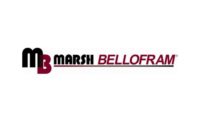A former naval industrial facility site in the Midwest was where the U.S. Navy and its contractors produced advanced weapons systems starting in 1940 during World War II.
Later in 1981, trichloroethylene (TCE) was found in on-site groundwater wells, soil, and in a drinking water intake pipe located in a local river that was close to the site. During manufacturing operations of the weapons systems volatile organic compounds (VOCs) were used as degreasers for metal parts primarily TCE. The industrial handling, storage, and disposal practices of chemicals like TCE were not as protective of the environment as today.
Due to this, the site was classified as a "Superfund Site" and required cleanup from the United States Environmental Protection Agency (USEPA).
The U.S. Navy has handled the cleanup of the site location and groundwater monitoring action under the oversight of the EPA and the state regulatory agency since the early 1980’s.
With approval of all government organizations, the Navy constructed a new building that houses a new groundwater treatment system that is used to protect both human health and the environment by containing VOCs on site.
Up to this point, more than 4.3 billion gallons of groundwater have been treated to remove more than 30,000 pounds of VOCs, while the Navy evaluates ways to improve the system on an ongoing basis.
After the cleanup took place, a developer purchased part of the site and surrounding areas creating an industrial park. The industrial park is home to many businesses today, making the site a great recovery story.
The site as a whole collects groundwater from seven different well-extracting points with the capacity of up to 14 wells. This water is then pumped to a pump station and then the water is pumped into two discharge pipes that enter air stripping units. This process removes VOCs from the water by transferring them from a liquid form into an air stream. Air stripping is an environmental engineering technology used to treat groundwater containing VOCs.
Romtec Utilities designed, manufactured, and supplied the pump station that works as part of the ground water treatment system.
“This station is the collection point from smaller inflows from the site. The system is located inside a groundwater treatment building,” Romtec Utilities, Mechanical Engineer Kevin Bogan said. “What makes this pump station different is that it's located in a pit in the corner of the building and is the primary feed into the treatment process. The water will gather at the bottom of this with a float to alert when it's time to pump.”
A double walled fiberglass Xerxes wet well was utilized with multiple custom penetrations. The double-wall tank includes a leak detection system to warn the operators if the inner or outer tank liners have been compromised.
“We made the top plate to incorporate all these inlets, using a standard EJ hatch. Everything is stubbed up the way it is, because they're going to finish this site with grating around the wet well,” Bogan said. “It's like an open pit within the building. It’s almost like a triple containment, we have the inner liner, the outer liner, and the lined foundation that acts as a third layer.”
The industrial process water and wastewater pump station features:
- Fiberglass 12' ID x ~8' deep Wet Well
- Discharge and Inlet Piping Penetrating Through Top of Tank
- PVC Piping
- Duplex 7.5hp Goulds Submersible Pumps which are submersible wastewater pumps like a standard sewage type pump
- The duty point is 650gpm @ 35' TDH
“It's a little less straightforward as we are feeding a process,” Bogan said. “We are feeding a device, so they specified several duty points, so it's just part of the overall treatment system. They expect to see a variety of TDH duty points. They're turning the pumps up and down with VFDs based on the needs of the air stripper units.”
Larry Rader, Vice President for MECX the general contractor on the new building and water treatment system was involved early in the project, working with Romtec Utilities on approvals and submittals for the tank.
“They had 7 aquifer wells, that pumped to the equalization tank (wet well),” Rader said. “It was set in a concrete vault below grade that was filled with pea gravel around that as well as steel grating on top of the double walled fiberglass tank. The two pumps then pump the water through the treatment system. The system was designed by another engineering firm, we took the design specs and built it. We had some say in the modifications.”
“We built the new building to house the treatment system, all the air stripper units, the equalization tank. We put all the equipment in for the new building,” Rader said. “It had two large air stripper units that run-in series or in parallel. After the treatment water is monitored, it is released to a concrete vault in the building. That would gravity feed out into the storm sewer after treatment.”
“It has the flexibility to add more groundwater extraction systems, for more wells to be added,” Rader said. “It was set up to treat 500 gallons a minute. The new system was put in, because the old system was at the end of its 25-year life span. It’s a state-of-the-art system, with updated systems, processes, and air strippers.”
This wasn’t just any industrial project as the fiberglass system is corrosive resistant. It’s a custom fiberglass top slab on the tank, with a unique tank that has custom inlet pipes, and the system caters to a more corrosive pumping environment with the VOCs in the water.
The design flexibility of all the partners of this treatment system, the custom tank and inlet piping, along with the internal mechanical pumps made this a unique system all around. The ability to recover part of this site for a business park is a testament to the water treatment system that continues to protect human health by removing VOCs at this location.
.jpg?1700104866)




